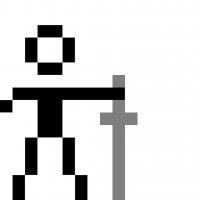Folks continue to tell me that Vulkan is a viable general-purpose replacement for OpenGL, and with the impending demise of OpenGL on Mac/iOS, I figured it's time to take the plunge... On the surface this looks like going back to the pain of old-school AMD/NVidia/Intel OpenGL driver hell.
What I'm trying to get a grasp of is where the major portability pitfalls are up front, and what my hardware test matrix is going to be like...
~~
The validation layers seem useful. Do they work sufficiently well that a program which validates is guaranteed to at least run on another vendor's drivers (setting aside performance differences)?
I assume I'm going to need to abstract across the various queue configurations? i.e. single queue on Intel, graphics+transfer on NVidia, graphics+compute+transfer on AMD? That seems fairly straightforward to wrap with a framegraph and bake the framegraph down to the available queues.
Memory allocation seems like it's going to be a pain. Obviously theres some big memory scaling knobs like render target resolution, enabling/disabling post-process effects, asset resolution, etc. But at some point someone has to play tetris into the available memory on a particular GPU, and I don't really want to shove that off into manual configuration. Any pointers for techniques to deal with this in a sane manner?
Any other major pitfalls I'm liable to run into when trying to write Vulkan code to run across multiple vendors/hardware targets?
~~
As for test matrix, I assume I'm going to need to test one each of recent AMD/NVidia/Intel, plus MoltenVK for Apple. Are the differences between subsequent architectures large enough that I need to test multiple different generations of cards from the same vendor? How bad is the driver situation in the android chipset space?











